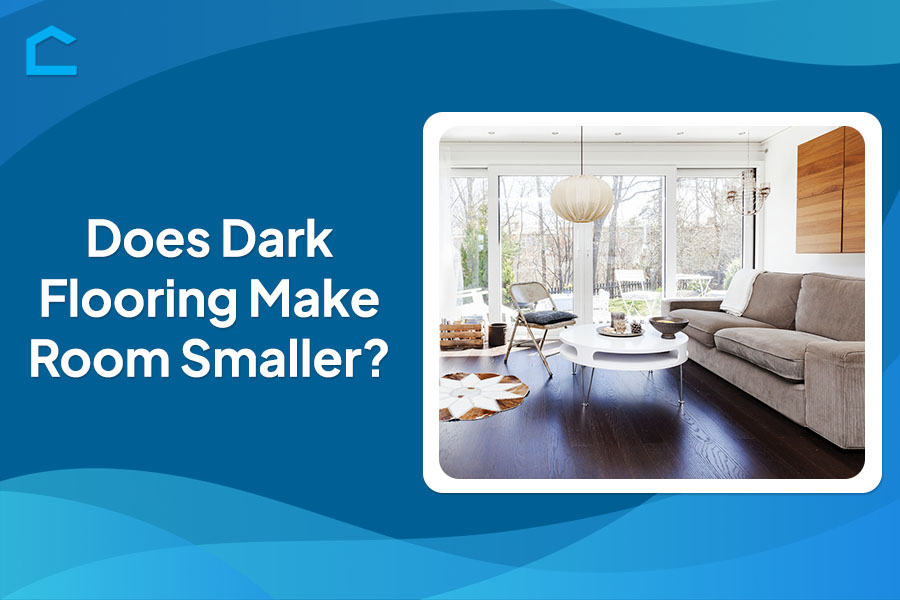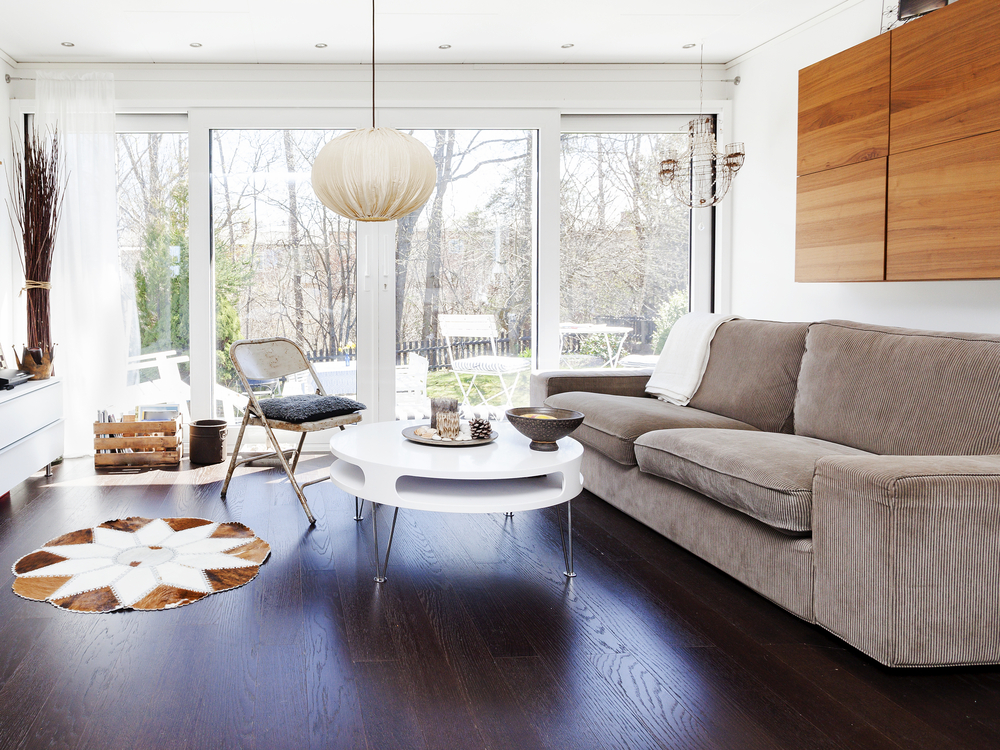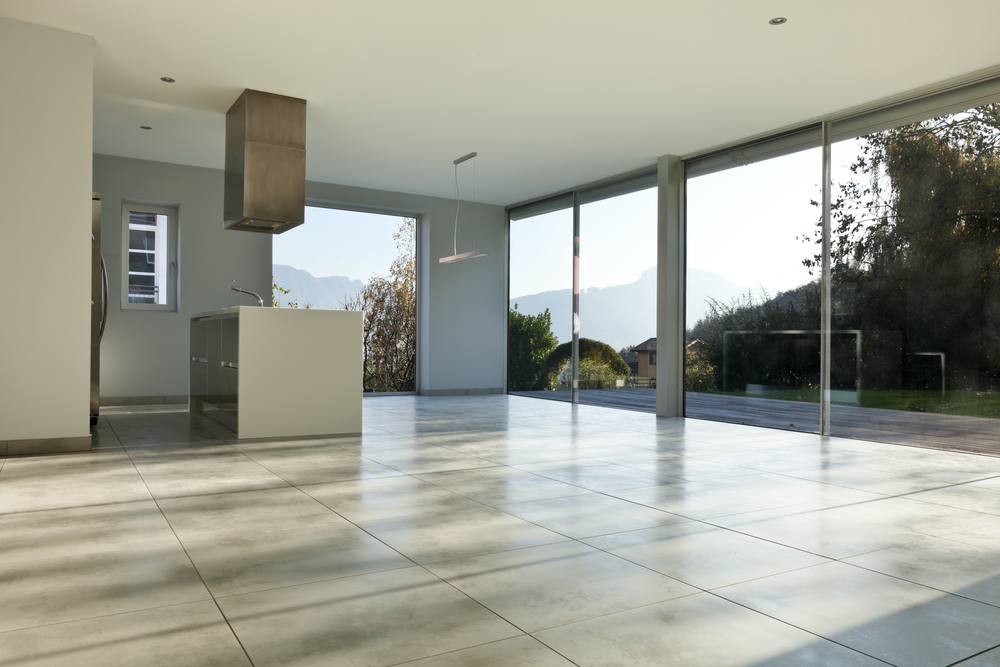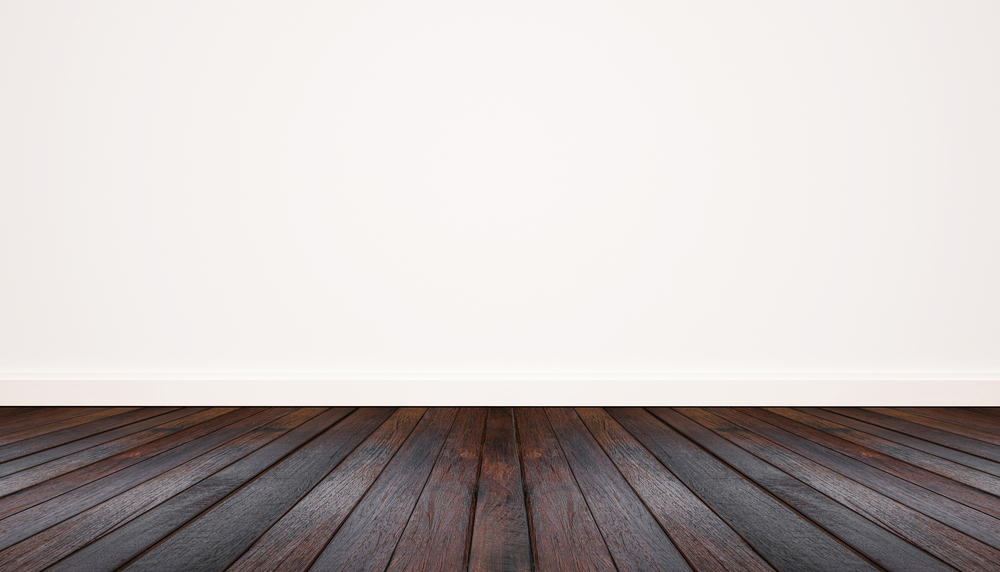Does Dark Flooring Make Room Smaller?

Whether you’re planning on renovating your home or building a new one, flooring plays a crucial role in shaping the overall look and feel of your space. Near the end of the home improvement process, comes a time when you need to choose the hardwood floors. When choosing hardwood floors, many opt for lighter colors as there is common knowledge that lighter shades make the room bigger compared to dark flooring. But is that true? Does dark flooring make room smaller or is it a common misconception?
We’ll examine how lighting, room layout, and other design elements can influence the overall appearance of a space. Join us as we investigate the complex relationship between flooring color and room size perception.

Source: shutterstock.com / Photo Contributor: Anna Andersson Fotografi
Does Dark Flooring Make Room Smaller?
Although you may know little regarding the flooring color choice, our Services Curated experts are here to unravel the truth. It is common knowledge that dark flooring absorbs light, making a room feel smaller, while lighter flooring reflects light, creating a sense of spaciousness. While it’s partly true, there’s more to making the room bigger, from lighter color walls and hanging curtains at ceiling height to incorporating larger mirrors to add visual appearance.
Strategic use of lighting, lighter wall colors, and minimalistic furniture arrangements can help counteract the potential visual impact of dark flooring. This ensures a balanced and visually appealing space. These techniques are effective regardless of the flooring color chosen.
Factors Affecting Room Perception
While flooring color can influence a room’s perceived size, it’s not the only factor at play. As we mentioned, natural light, ceiling height, furniture placement, and color schemes also contribute to how spacious a room feels.
Ample natural light and high ceilings can counteract the confining effect of dark flooring, while strategic artificial lighting can illuminate dark corners. Well-proportioned furniture and a minimalist layout promote openness, while light-colored walls and accents balance the visual weight of dark floors.
Smooth, uniform textures and subtle patterns maintain a sense of openness. Heavily textured or patterned surfaces create intimacy. By considering these factors and their interaction with flooring color, you can create a space that feels open and inviting, regardless of your flooring choice.
What Flooring Makes a Room Look Bigger?
When it comes to creating the illusion of a larger space, certain flooring options can work wonders. If you’re wondering what flooring makes a room look bigger, you’re in luck.
By carefully selecting the right flooring color, material, and pattern, you can visually expand the size of a room and make it feel more spacious. Let’s explore some flooring choices that can help achieve this goal.
Light-colored Flooring
One of the most effective ways to make a room look bigger is to opt for light-colored flooring. Light colors, such as white, beige, light gray, or pale wood tones, reflect more light and create a sense of openness. These colors help brighten the space and give the illusion of a larger area.
When choosing light-colored flooring, consider the undertones and how they complement the room’s color scheme. Cool undertones, such as gray or blue, can create a crisp and airy feel, while warm undertones, like beige or pale pink, can add a cozy and inviting ambiance.
Large Format Tiles or Planks
Another flooring option that can visually expand a room is large format tiles or planks. By using larger tiles or wider planks, you minimize the number of grout lines or seams. This helps create a more seamless and continuous look.
This uninterrupted flow tricks the eye into perceiving the space as larger than it actually is. When selecting large format tiles or planks, consider the proportions of the room.
In smaller spaces, opt for tiles or planks that are proportionate to the room’s size to maintain a balanced look. In larger rooms, you can go bigger with the tile or plank size to emphasize the expansive feel.

Source: shutterstock.com / Photo Contributor: alexandre zveiger
Glossy or Reflective Finishes
Flooring with a glossy or reflective finish can also contribute to making a room look bigger. Materials such as polished porcelain tiles, glossy hardwood, or epoxy-coated concrete reflect light. This creates a mirror-like effect, visually expanding the space.
When incorporating reflective flooring, be mindful of the amount of natural and artificial light in the room. Too much reflection can create glare and make the space feel uncomfortable.
Balance the reflective flooring with matte or textured elements. These include area rugs or furniture. This addition adds depth and prevents the room from feeling too cold or sterile.
Consistent Flooring Throughout
Using the same flooring throughout multiple rooms or an open-concept space can create a sense of continuity and make the area feel larger by eliminating the visual breaks caused by different flooring materials.
The eye flows seamlessly from one space to another, perceiving the overall area as more expansive. When selecting consistent flooring, consider the function and style of each room.
Choose a flooring material that is versatile enough to work well in all the connected spaces. This could be a neutral-colored hardwood or a large format tile. These options complement various design styles.
Diagonal or Herringbone Patterns
Installing flooring in a diagonal or herringbone pattern can also create the illusion of a larger space. These patterns draw the eye across the room, emphasizing the longest dimensions and making the area feel more expansive.
When using diagonal or herringbone patterns, keep the flooring color and material consistent to maintain a cohesive look. These patterns work well with hardwood, luxury vinyl planks, or tiles, adding visual interest without overwhelming the space.
Effects of Dark Floors on Ceiling Perception
While dark floors are often associated with making a room feel smaller, they can actually contribute to the illusion of higher ceilings. If you’re wondering do dark floors make ceilings look higher, the answer may surprise you.
The contrast between dark flooring and light walls and ceilings creates a visual separation that emphasizes vertical space, drawing the eye upward. Dark floors also create a strong horizontal baseline that accentuates the room’s vertical dimensions, making the walls appear taller.
Adequate lighting is essential to balance the visual weight of dark floors and create an open atmosphere. Incorporating vertical elements and lighter décor can further enhance the illusion of height.
However, it’s important to consider the room’s proportions and layout when using dark floors to avoid overpowering smaller spaces. With careful design choices, dark floors can add sophistication while maintaining the perception of higher ceilings.

Source: shutterstock.com / Photo Contributor: Sasin Paraksa
Conclusion
So, what can we conclude? Does dark flooring make room smaller? The visual effect of flooring on the size of the room can be a cause of concern for many homeowners; however, adding dark flooring could enhance the visual appearance of the room. We’ve examined the interplay between color psychology, lighting, room layout, and other design elements that contribute to the perception of space.
While dark flooring can sometimes create a more intimate atmosphere, it doesn’t necessarily make a room feel smaller when paired with the right design choices. We hope this article has helped you better understand the factors that influence the perceived size of a room.
By considering the principles discussed here, you can create a spacious and inviting space that reflects your personal style, regardless of your flooring color preference.
